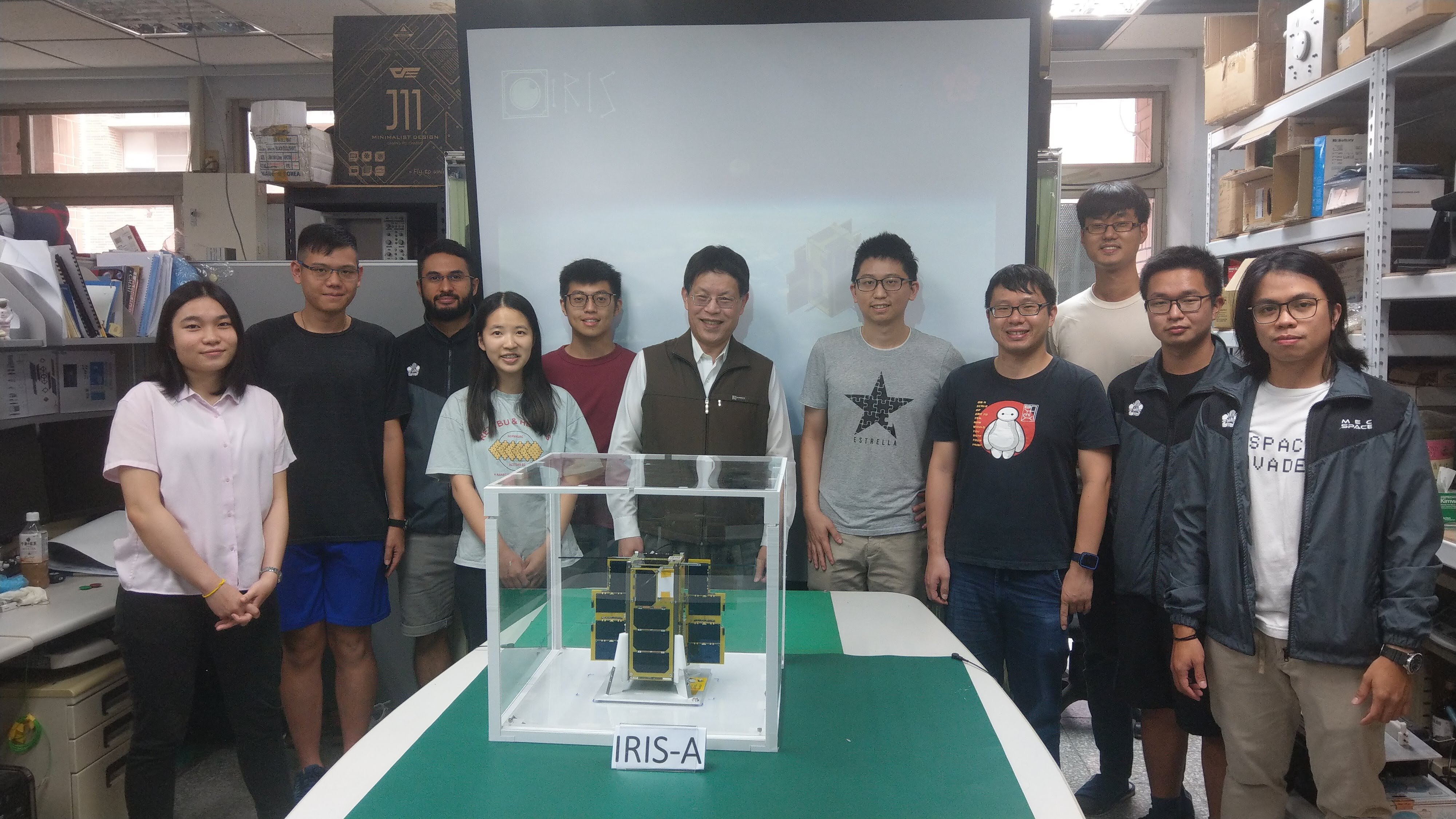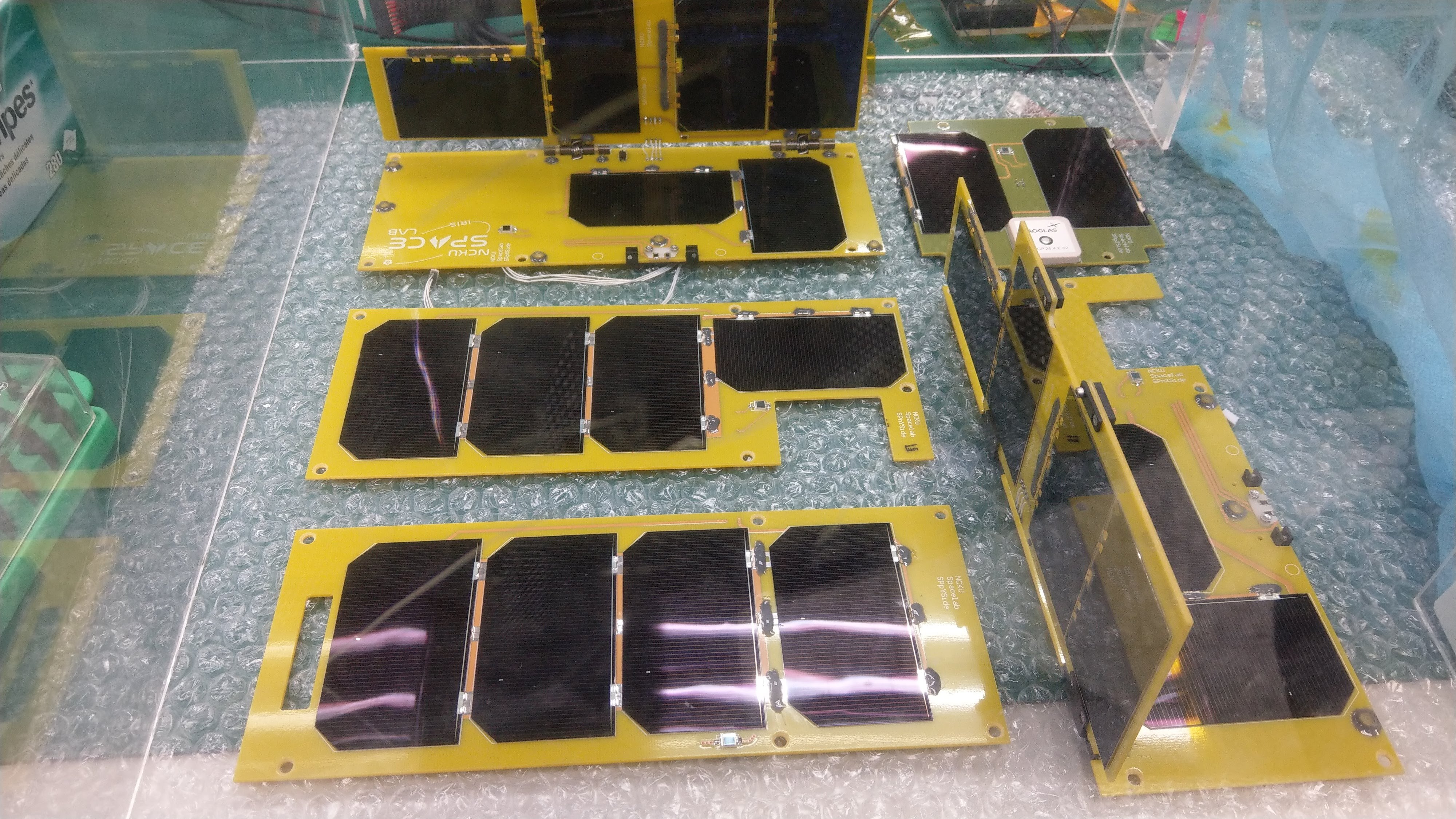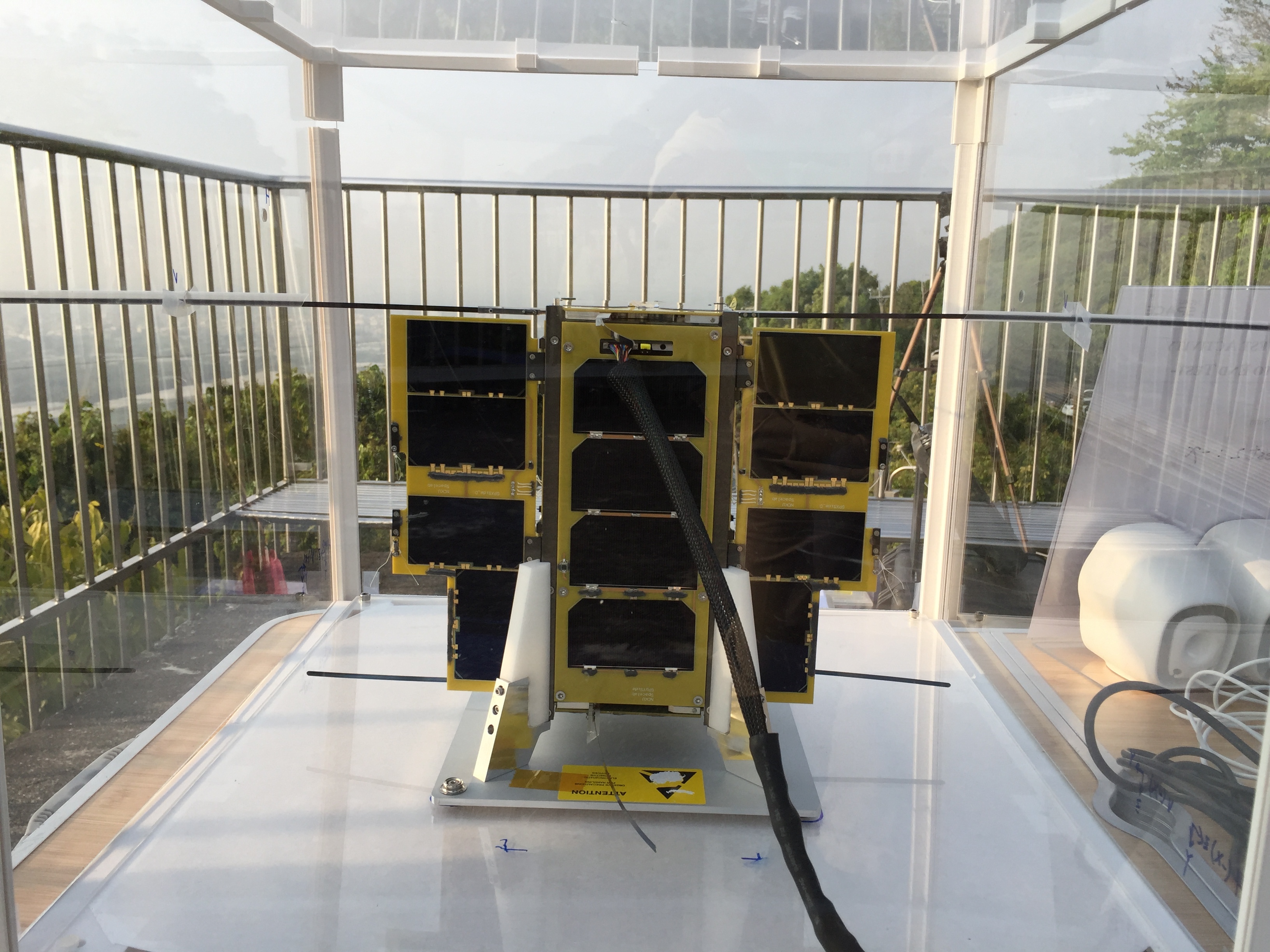Into the Future Trend Beyond 5G: NCKU-Developed Satellite IRIS-A Successfully Launched into Space
Written by Hsu Tsu-Yueh. Image credit to News Center

IRIS-A CubeSat is in smooth operation in space
A team from the Department off Electrical Engineering of National Cheng Kung University developed the IRIS-A CubeSat, which was successfully launched Florida, USA, into space on the SpaceX Falcon 9 from, during nighttime of January 13th, and was put into orbit at an altitude around 500 kilometers. The CubeSat has quickly established communication with ground station during daytime of the 14th. After days of efforts, the CubeSat has safely completed its Launch and Early Orbit Phase (LEOP) and is currently functioning normally to be utilized in mission operations and experimental stages.
NCKU Electrical Engineering Professor Jyh-Ching Juang leads a team consisting international students in developing the IRIS-A, a two-kilogram-level CubeSat. The CubeSat measures 10 cm in length, 10 cm in width, and 20cm in height. This is another huge aerial technological event for NCKU following the successful launch of the PHOENIX CubeSat in 2017.

Prof. Jyh-Ching Juang (middle) leads international student team from NCKU in developing the IRIS-A CubeSat
Jyh-Ching Juang pointed out that the PHOENIX CubeSat has officially retired in 2019 after functioning successfully for two years following its launch in 2017. This experience has given NCKU strong power in aerial technology. Therefore, starting from 2018, the NCKU team has been carrying out a MOST funded project that aims to design, develop, launch, and operate the IRIS CubeSats. IRIS, short for Intelligent Remote sensing and Internet Satellite, is a satellite that possesses both intelligent remote sensing and internet functions. The first CubeSat, IRIS-A, being successfully launched and established communication this year, demonstrates that the overall system and individual modules on the satellite has reached high Technology Readiness Level (TRL), which is not an easy accomplishment.
The IRIS-A CubeSat has been placed into orbit at an altitude around 500 kilometers. Under normal functioning circumstances, the CubeSat is expected to serve 6 to 7 years, with the mission to explore IoT technology in space. Currently, the tracking data, location information, and status data of each component of the CubeSat are accessible.
High bandwidth, low latency, and high connectivity are the three main features of the 5G communication technology highly discussed in recent years, along with expectations for realizing applications such as smart health, smart transportation, and smart city. Low Earth Orbiting (LEO) satellite communication has received great attention. Jyh-Ching Juang expressed that the base stations for 5G communication cover a smaller signal range, which could easily create blind spots. This problem could be improved with communication satellites. Among communication satellites, CubeSat is crucially helpful for its compact size, shorter development time, and good mobility. In the future, communication satellites are suitable for maintaining uninterrupted communication during rescue missions and human or object tracking missions in remote areas or on sea surface.

IRIS-A CubeSat (before assembling)
From designing, manufacturing, integration, testing, to operation after launch, the various stages that completed the IRIS-A CubeSat were all done in NCKU. According to Jyh-Ching Juang, since the project started in 2018, the team has received attention from the University of the Philippines, Diliman, which has even funded with its own scholarships for two students to study in NCKU. In addition to the Philippines, the team also consists of students from Thailand, Guatemala, and France, making it quite an international team. The operation of IRIS project is also applicable in domestic academia and industry, boosting the nation’s overall power in space industry. Pei-Jun Lee, Professor of Taiwan University of Science and Technology, Ho-Nien Shou, Professor of the Air Force Institute of Technology, Liscotech, and Letscom International Ltd. are part of the participating parties.
At the current stage, the IRIS-A CubeSat is functioning smoothly as testing data for its voltage, power, and temperature systems are normal. “We are very glad to announce that the Launch and Early Orbit Phase has been successful,” Jyh-Ching Juang said. Afterwards, the project will enter its payload operation stage. The IRIS-A CubeSat applies Sun-synchronous orbit, therefore the time it passes over Taiwan, though not regular, can be calculated. The team usually would scout out locations that allows better communication connections and longer communication time. On average, the IRIS-A CubeSat passes over ground tracking station 4 times per day. The ground tracking station in NCKU is located in its Gui-Jen Campus. Regarding regulations against COVID-19, the team has developed remote connection systems that can operate the satellite while keeping information secure.

Compact size, shorter development time, and good mobility of CubeSats make them crucially helpful to satellite communication development
In addition to the operation of IRIS-A, the NCKU team will continue to work on projects for IRIS-B and IRIS-C, which are expected to be launched in 2023. The IRIS-B objective is to demonstrate the in-orbit intelligence remote sensing data processing, expecting to facilitate high-end remote sensing satellite to lock the region of interest (ROI) with the efficient image acquisition approach. The mission of IRIS-C focuses on verifying Star Tracker real performance in space environment. The following IRIS CubeSats are expected to be successfully launched into space to carry out their missions. The projects bring positive influences to the society and the nation’s space industry development, including local development of key technologies, advanced talent cultivation, and realizing interdisciplinary system integration.
Provider:
News Center
Date:
2022-03-14




